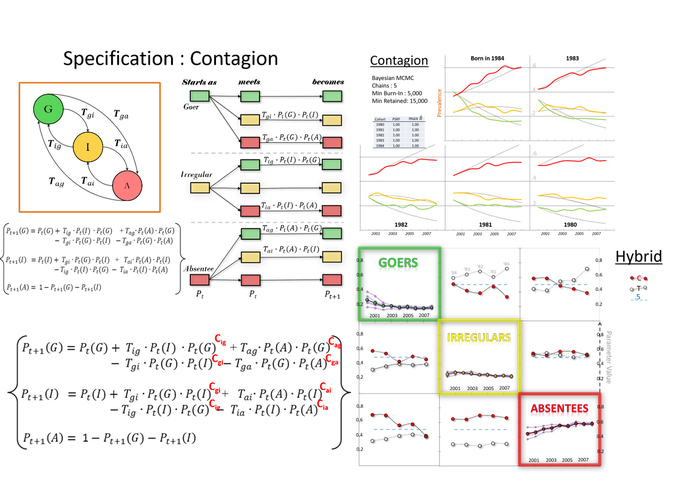Epidemic Modeling of the Onset of Social Activities (EMOSA Models)
Applications to Adolescent Religious Involvement
Abstract
Epidemic Models of the Onset of Social Activities (EMOSA Models) have been used in the past to describe behavioral processes that spread within social networks through social influence. Two theoretically distinct methods of social influence that are represented within EMOSA models are social contagion, which is a type of direct one-to-one interpersonal social influence, and general diffusion, which is the kind of social influence that passes through media and other broad cultural channels. Past EMOSA models have been developed to explain adolescent problem behaviors such as smoking, drinking, precocious sexuality, and delinquency.
In the current paper, we adapt the EMOSA framework to model transitions in religious involvement during late adolescence. We fit the model to data from the National Longitudinal Survey of Youth 1997 (the NLSY97), which is based on a national U.S. household probability sample spanning 10 years of longitudinal observation. The study applies EMOSA models to examine the relative influence on late adolescents of social contagion versus general diffusion.
We present several methodological innovations, including EMOSA applications in a new theoretical arena, a new Bayesian Markov Chain Monte Carlo (MCMC) approach for estimating EMOSA parameters, and graphical innovations to represent different parts of the EMOSA process. Results indicate moderate influence of social contagion contact on transitions in church attendance, but stronger general diffusion processes. Both methodological and substantive implications are discussed.
